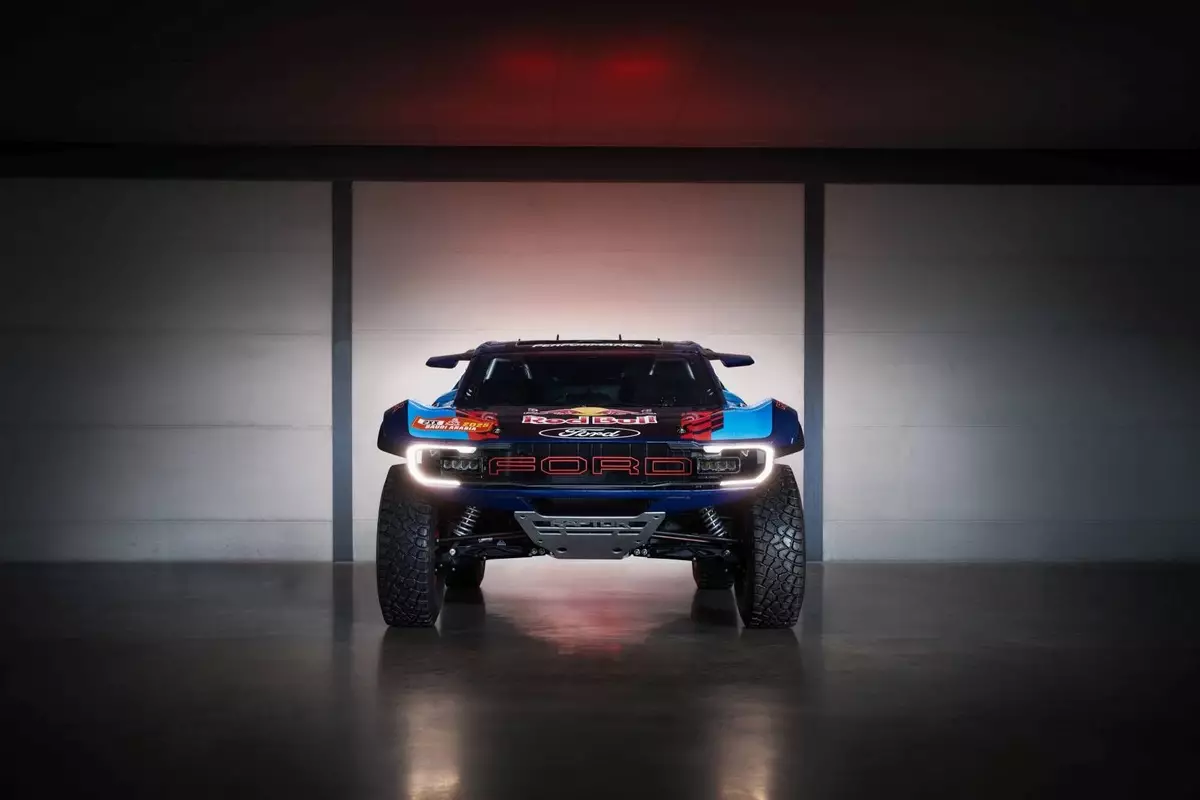Ford has been a prominent name in rally racing, and the brand’s latest endeavor, the Raptor T1+, showcases its commitment to pushing the boundaries of automotive engineering. Partnered with M-Sport, a stalwart in the World Rally Championship, Ford is gearing up for an exhilarating showdown in the infamous Dakar Rally. With a roster of elite drivers, including champions like Carlos Sainz Sr and Nani Roma, the Raptor T1+ is positioned as a fierce contender in this grueling event. This article delves into the advanced engineering aspects that make the Raptor T1+ a remarkable piece of machinery.
At the heart of the Raptor T1+ lies the Coyote V8 engine, a powerhouse designed to withstand the rigors of off-road racing. Producing a formidable 268 kW (360 bhp), this engine is engineered for performance, although its output will be vetted through the FIA’s Torque Meter for precision. This robust power unit ensures that the car can tackle the demanding terrains of the Dakar Rally, transferring power to all four wheels through a sophisticated Sadev six-speed sequential gearbox. Such a design not only enhances acceleration but also provides drivers with optimal control during rapid gear changes, a crucial advantage in rally scenarios where every second counts.
One of the Raptor T1+’s standout features is its innovative suspension system. Designed with an independent front and rear setup, the suspension prioritizes durability while keeping the vehicle lightweight—a critical balance for racing. The setup incorporates eight FOX shock absorbers, combining four coilovers and external bypass absorbers paired with Eibach springs. This eight-spring configuration is designed to provide up to 350mm of wheel travel, essential for navigating the harsh obstacles characteristic of the Dakar course. The use of external bypass shock absorbers enables the car to endure severe impacts while maintaining a sense of comfort for the driver. Moreover, the five adjustment positions on these shock absorbers allow for personalized tuning that can adapt to various conditions quickly.
Aerodynamic Design for Competitive Edge
In an environment as challenging as the Dakar Rally, aerodynamics play a pivotal role. Ford has invested significant resources in fine-tuning the Raptor T1+’s aerodynamics, drawing inspiration from the high standards seen in Formula 1 vehicle design. By employing computational fluid dynamics (CFD) and wind tunnel testing, the engineers have optimized the car’s shape to reduce drag while enhancing stability at high speeds. Weighing in at 2,010 kg, the vehicle benefits greatly from these advancements, ensuring that every component works in harmony to improve both straight-line speed and cornering agility.
Driver Comfort and Personalized Design
While performance is paramount, the comfort of the drivers cannot be overlooked. The Raptor T1+ is equipped with essential features, including a built-in air conditioning system—an invaluable asset during the scorching conditions of the desert. Collaborating closely with two-time Dakar champion Nani Roma, Ford has meticulously crafted the interior to meet the specific needs of drivers. The cockpit has been designed for flexibility, allowing adjustments to the seats, pedals, and steering to accommodate different body types. To ensure optimal fitment, a 3D scan of Roma was utilized to inform the interior layout, ensuring that every driver feels at home behind the wheel.
Ford’s Raptor T1+ epitomizes the fusion of cutting-edge technology, racing heritage, and driver-centered design. As the team prepares to face the Dakar Rally, anticipation builds around the performance capabilities of this formidable competitor. With drivers like Carlos Sainz Sr, Nani Roma, and others at the helm, the Raptor T1+ is not just a car; it’s a representation of Ford’s relentless pursuit of excellence in the world of motorsport. As the race approaches, the rally community will undoubtedly be watching closely, eager to see if the Raptor T1+ can deliver on its promise and claim victory in one of the most challenging competitions on the planet.

